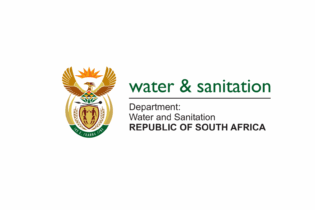A new book entitled Sustainable use of South Africa’s Inland Waters: a situation assessment of Resource Directed Measures was launched by the Water Research Commission during the Southern African Society of Aquatic Scientists’ 2012 Congress on Tuesday, 3 July in Cape St Francis Resort, Eastern Cape.
The book acknowledges the contributions made by the late former Minister of Water Affairs, Kader Asmal and specifically for his role in setting up the South African Water Law during the transition period in 1994. While giving a detailed account of the two strands of history (pre and post 1994) and how they interacted, the book also gives insights into what could urgently be done to overcome the a worst case scenario for the country’s water resources. In 1994 the country’s river scientists emerged from scientific isolation to make a major global contribution to a new science aimed at resuscitating the world’s dying rivers and bringing a more caring balance into the management of those still in good condition. As the incoming government prepared its new water law (National Water Act of 1998 – NWA), the water scientists were ready with their knowledge and vision of sustainability. The book first outlines the background to water supply and demand in South Africa, and the development of water law from 1652 to the present day. It then provides details of how the country has mobilised to balance the demands for water with the need to protect the aquatic ecosystems – rivers, lakes, estuaries and groundwater – that are the vital support systems for our lives and industries. The Resource Directed Measures mentioned in the title of the book are the three measures recognised in Chapter 3 of the NWA: 1. A classification of every major water resource in the country as Management Class 1 (Minimally used), Management Class 2 (Moderately used) or Management Class 3 (Heavily used), through a process of research, stakeholder consultation and negotiation.2. A Reserve of water from the water resource for Basic Human Needs and a further Ecological Reserve of water for the ecosystem itself, to ensure its continued health and efficient functioning at the agreed Management level.
3. Resource Quality Objectives, which are measurable targets that can be monitored in order to ensure compliance. Editors and lead authors of the book, Drs Jackie King of Water Matters and Harrison Pienaar of the CSIR, say that we should be proud of our achievements, which includes a world famous water law, a growing body of scientists and water managers working competently in the field of Integrated Water Resources Management and growing international recognition of their work. Now, we need to bring together, they say, the considerable energy and willingness to collaborate our water professionals, and the drive of our politicians for service delivery and strong participatory governance. We have the skills and knowledge to achieve our vision of the country’s water resources to be developed and used in a truly sustainable and fair way, but the effort is presently uncoordinated, scattered, sometimes contradictory and often misunderstood and mis-used.
The result, according to a recent National Spatial Biodiversity Assessment is that 82% of the country’s river ecosystems are threatened, with 44% critically endangered. The comparable figures for terrestrial ecosystems are 33% and 5% respectively.
The book offers ten points for action that can bring the vision of healthy water resources closer, providing reliable services into the future, specifying what should be done and by whom. This call for action includes the urgent completion of water resource classification for the whole country, as this is the only measure we have for achieving a negotiated and equitable distribution of water; of finding the right balance between resource use and resource protection; and of providing a firm foundation for compulsory licensing of water resource use and for compliance monitoring. The authors also point out the need to insert conservation planning into the national planning agenda, or the danger exists that most water resources could be classified at Management Class 3, with immense negative implications for biodiversity. Other points for action include the swift completion of compulsory licensing after classification is complete, as required by the NWA; capacity building within the Department of Water Affairs (DWA); and a re-alignment of scientific endeavour to best help water managers make the new system succeed. During the review process that resulted in the new water law it was acknowledged that implementation of the NWA would be neither quick nor easy; worthwhile endeavours of this magnitude seldom are. The authors points out that it will be important for DWA not to fall prey to frustration and impatience. This could lead to injudicious amendments to the NWA, which is internationally acknowledged to be one of the best of its kind, simply to make its implementation more achievable in the short term. South Africa has shown many times in many ways that its people can work together to intractable problems, and could do so again with the right leadership. It is suggested that the DWA slogan Some for all forever should be expanded to reflect the collaborative and determined effort now needed to save the nations’ aquatic systems: “Ensuring some for all forever, together”. Contact: Water-Linked Ecosystems Director, Dr Stanley Liphadzi, Cell: 083 290 7230. To download a copy visit www.wrc.org.za






